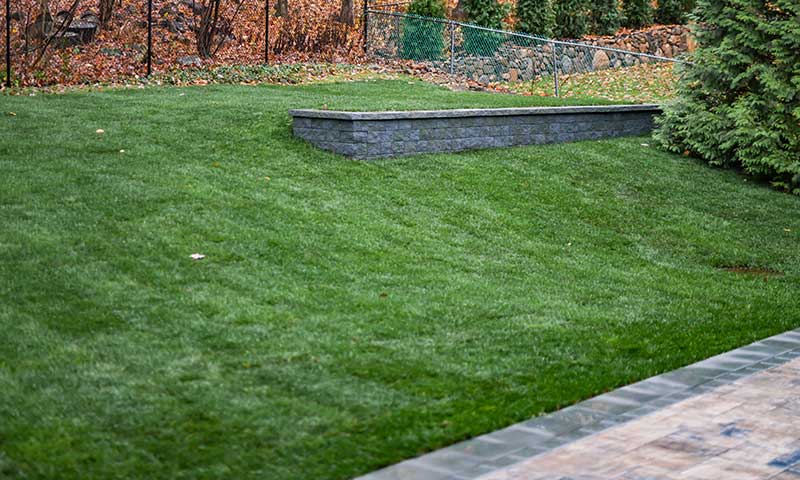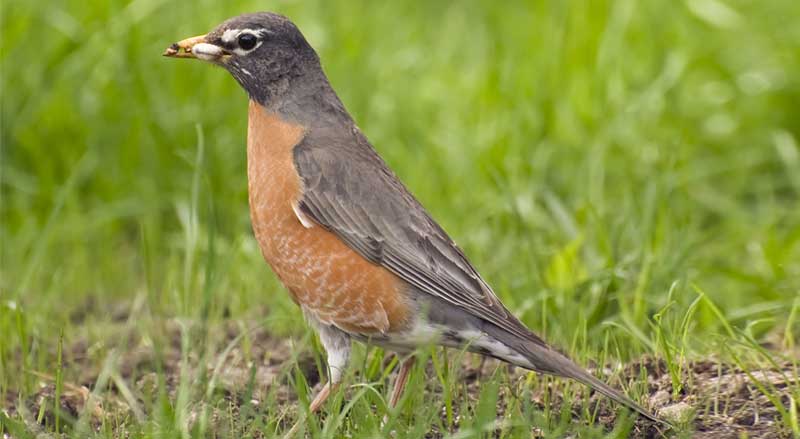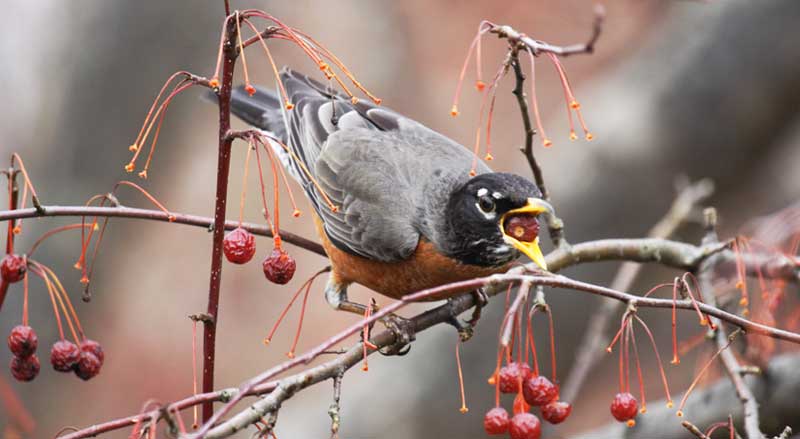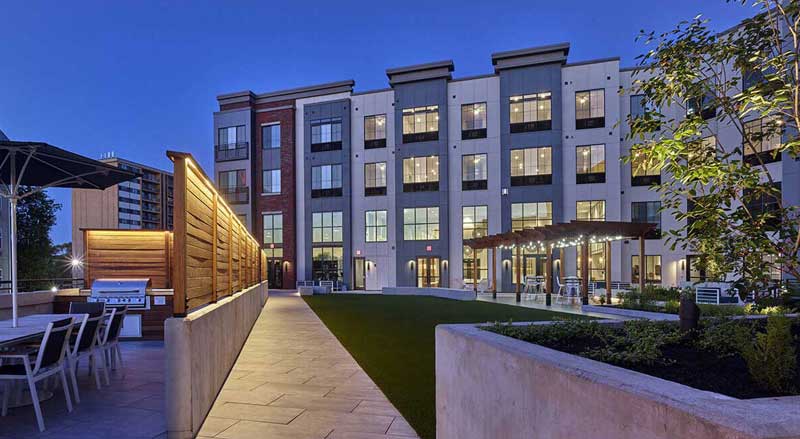If you live in New Jersey, your lawn is probably looking pretty tired by now. Our dry, hot summer was difficult on our lawns, and by now they’re showing serious signs of water and heat stress.
If you want your lawn to look healthy and lush next spring, now is the time to restore your landscape. September is lawn renovation time!
Lawn Renovation
Lawn renovation refers to improving the existing lawn and not completely starting over from scratch.
If your lawn still provides over 50% coverage, lawn renovation should do the trick.
Over time, lawns are damaged by:
- Drought and heat
- Pest damage
- Destructive mowing practices
- Lawn disease
- Soil compaction
- Increasing shade from nearby trees
- Excessive thatch on lawn
- Weeds
Lawn renovation helps lawns recover from these problems.
Your lawn still has a lot of life left in it. It just needs some TLC.
Renovate Your Lawn Now
September is the best time for lawn renovation in New Jersey.
Temperatures stay warm enough during the day and cool enough at night to encourage new grass and root growth. And the lower daytime temperatures reduce chances of heat stress.
Dethatch your lawn before beginning any lawn renovation. And continue to rake falling leaves once a week until they are all removed from your property.
Also, address weeds before your renovation efforts start.
Remove weeds by hands—or use mowers—as best as you can.
But don’t use weed control products now. They can hurt grass germination. This type of weed control should wait until spring.
Aerate Your Lawn
At this point, lawns have suffered with soil compaction and heat stress.
Parts of your lawn are probably brown and thin.
Aeration restores optimal soil conditions that support new growth.
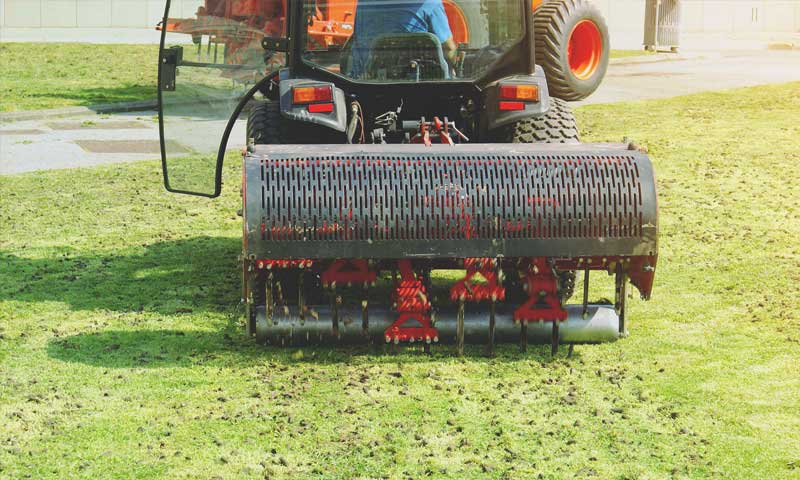
Aeration removes soil plugs from your lawn. This creates passageways in the ground that allow nutrients, air, fertilizer, and water to reach the grass roots easily and promote growth.
Seeding & Overseeding
One of the most important rules about lawn seeding and overseeding is to use the best seed for your property’s specific conditions.
Your local garden store can help you select the right one.
One of the most popular lawn grasses in New Jersey is Kentucky Bluegrass.
Now, let’s look at overseeding vs. seeding.
Overseeding
Overseeding is a process that adds grass seed to existing turf.
Overseeding will keep your lawn looking lush and thick.
It’s used to fill out a lawn, eliminate bare patches, or to introduce a new grass species into your lawn.
Mow and dethatch the lawn before distributing new seed. This will help the new seed establish good contact with the soil.
Overseed the whole lawn area to maintain a uniform look. Otherwise, you may end up with a lawn that has patchy sections of different grasses, or varying lawn density.
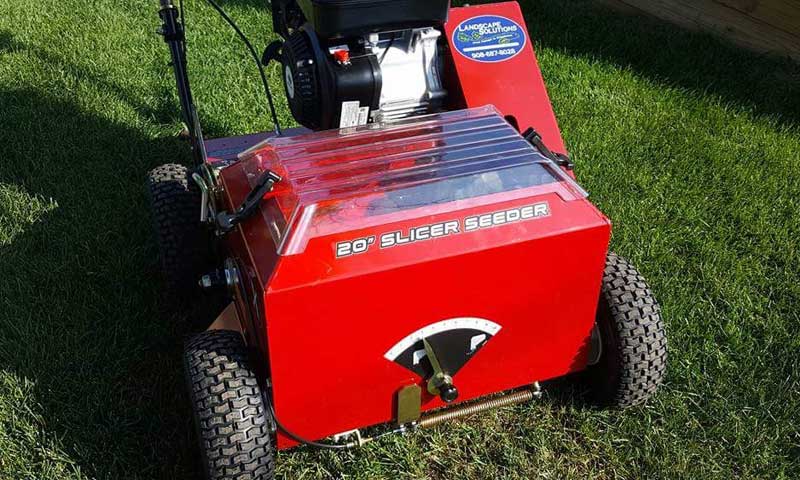
Slice seeders provide professional overseeding results. They create an even planting bed. Seeds are worked into the soil to promote germination.
Seeding
When you seed a lawn, you add grass seed to bare areas. It can create completely fresh growth over a whole lawn or just in seriously worn areas.
You can add a fresh layer of topsoil before seeding. Afterward, rake seeds into the soil surface for better soil contact.
Tips for Overseeding and Seeding
- Use a lawn spreader in larger areas to make seed distribution even.
- New seed must touch the soil, or it won’t germinate.
- Seed in September. Once m-to-late October arrives, the cooler weather and closeness to the first frost make it too late to plant grass seed.
- Be sure to water frequently to keep the seeds moist. This will make them germinate faster.
- Use a rain gauge to monitor water. Supplement rainfall with watering if your lawn isn’t getting at least one inch of water per week.
Mowing Your Lawn
Continue to mow your lawn in September. A good rule of thumb is to avoid cutting more than 1/3 of the total grass blade length.
If you planted new seed, keep the lawn shorter to make sure that sunlight can reach the new seeds. Continue this for about one month, giving all seeds a chance to grow.
Once the new grass is as tall as the original grass, once again mow the grass at a higher level.
Try to cut your grass once a week to aid root development.
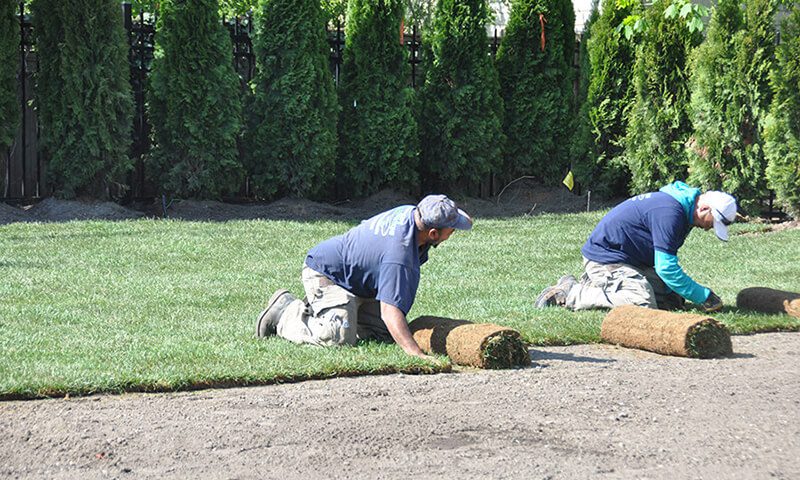
Sod
Do you want your fall lawn to look instantly appealing? Then consider the benefits of sod.
September is an ideal time to have sod installed in your yard.
People enjoy sod because it looks great as soon as it’s installed on your property. And you can even walk on your lawn without worry in as little as three weeks.
Planning an outdoor, mid-October event in your yard? Sod installed the beginning of September will be ready to party when you are!
Some people choose not to sod—but to seed—because sod is much more costly than seed. And installation is expensive, as well.
You need to carefully prepare land before installing sod. This is labor intensive and probably isn’t a project you want to do yourself.
And you want to be sure that you can install the sod within 24 hours of its delivery.
If the sod dries out—and this happens quickly—the sod won’t mesh well with your landscape. Come the spring, you’ll have a sad, brown, unhealthy lawn, instead of the gorgeous, green lawn you were hoping for.
Sod works great in both smaller and larger areas.
We offer premier sod installation services at Landscape Solutions.
Fertilization
The single most productive time to fertilize your lawn is in the fall.
Fertilizer will feed your grass and keep your lawn attractive and healthy.
When you fertilize in September, the grass develops deeper roots and holds onto the fertilizer nutrients for use that spring.
Aeration helps the fertilizer penetrate the ground and reach the grass roots. So, if you’re planning to fertilize, be sure to aerate first. Then immediately follow your aeration procedure with seeding and fertilizing. This should all take place over a period of no more than 48 hours.
Your local gardening center can help you choose the best fertilizer to use. You don’t want to use the same fertilizer as you would in the spring—those fertilizers will cause an unwanted surge in growth which will ultimately hurt the grasses over-winter survival.
For help with all your lawn renovation needs, contact us at Landscape Solutions.

